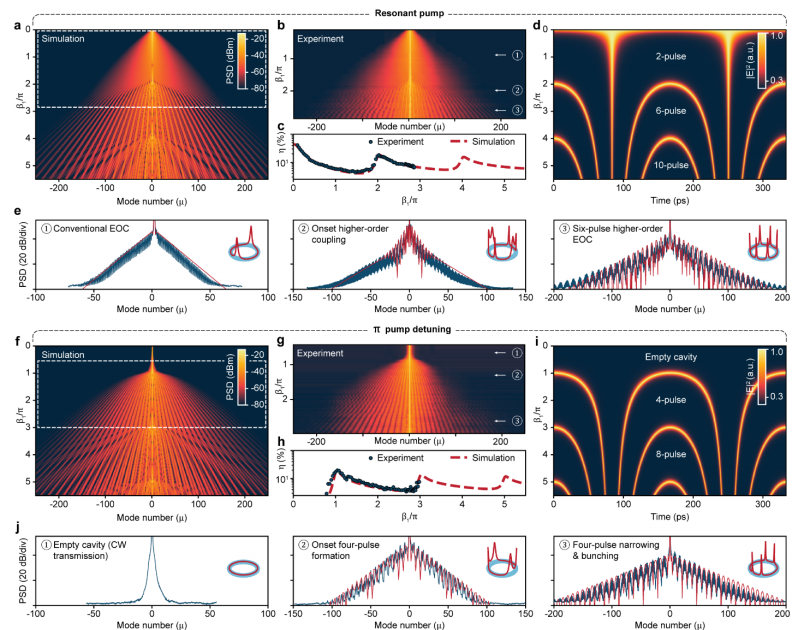
This paper investigates the dynamics and control of programmable electro-optic (EO) frequency combs (EOFCs) based on thin-film lithium niobate (TFLN) photonic platforms. It explores the universal dynamics behind cavity EO microcombs and their frequency lattice connectivity, emphasizing modulation depth and optical detuning as key parameters controlling comb formation. The study shows how long-range couplings between cavity modes enable programmable spectro-temporal shaping of the generated combs and pulses.
The authors achieve three major advances in EOFC technology:
Repetition-rate flexibility: The ability to adjust the repetition rate of the combs from a single device.
Comb bandwidth extension: They demonstrate substantial bandwidth extension beyond traditional scaling laws.
Flat-top spectrum generation: Using resonantly-enhanced techniques to create frequency combs with flat-top spectra, ensuring minimal power variation across modes.
By leveraging multi-tone modulation and varying the modulation depth and optical detuning, they were able to engineer complex long-range couplings between frequency modes. This led to unconventional optical states, including multi-pulse dynamics and enhanced pulse conversion efficiency.
Additionally, the study includes experimental verification of the theoretical predictions, using a traveling-wave modulated racetrack resonator. The experimental results are consistent with simulations, showing that changes in modulation depth and detuning lead to transitions between conventional and more complex EOFC states. These transitions are accompanied by improvements in pulse conversion efficiency and temporal dynamics.
The findings provide new physical insights for cavity-based EO systems, paving the way for the development of highly versatile comb and pulse sources that can be controlled and enhanced via microwave electronics for next-generation photonic applications.
OMeda (Shanghai Omedasemi Co.,Ltd) was founded in 2021 by 3 doctors with more than 10 years of experience in nanpfabrication. It currently has 15 employees and has rich experience in nanofabrication (coating, lithography, etching, two-photon printing, bonding) and other processes. We support nanofabrication of 4/6/8-inch wafers.